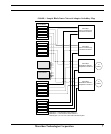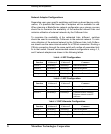
Introduction
2 Marathon Technologies Corporation
• Reduced Floor Space Usage in the Data Center
Modular design reduces cost through more efficient use of valuable floor
space. The increased density can significantly reduce the space require-
ments in a data center.
• Reduced Cost of Power and Cooling
Blades servers integrate resources and share key components. Since
blades in a chassis share common power supplies, power is distributed
more efficiently and less heat is generated for a given amount of pro-
cessing power.
• Increased Reliability and Availability
Since the BladeCenter may be configured with redundant hot-swap
power supplies and built-in network switches, it effectively eliminates
several key single points of failure and provides greater system availabil-
ity than conventional rack-mount servers. The BladeCenter also
reduces down-time due to server failure by making replacement of a
failed server easy.
Mission-Critical Blades: The Need For Fault Tolerance
As enterprises move more compute load to blade servers, blades are
becoming increasingly mission-critical. Because downtime has significant
associated costs - lost sales, decreased customer satisfaction, lost produc-
tivity - the need for a simple, affordable way to keep blades running continu-
ously is becoming urgent. Four trends are converging to further increase
the need for continuously available blades:
• Improved server density and server consolidation increases the
potential risk to business operations in the event of downtime by
“putting all your eggs in one basket”
• Increasingly stringent regulations require data retention and avail-
ability
• More threats to security and physical systems
• Increasing complexity of enterprise infrastructure, and impact of
system downtime


















